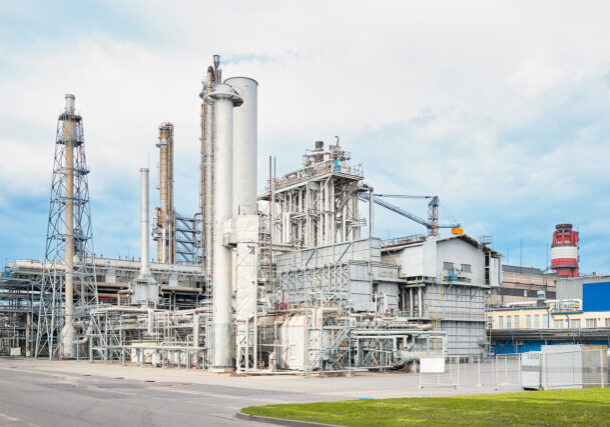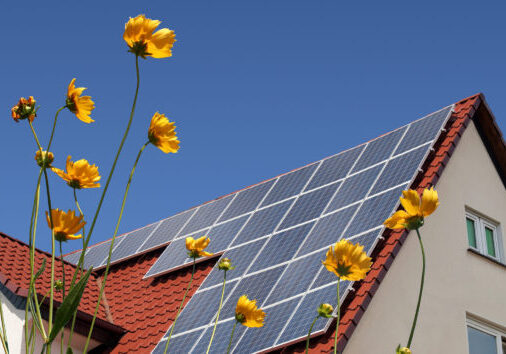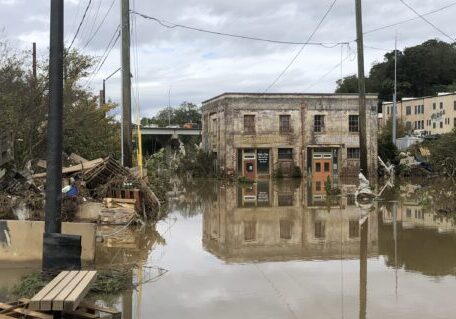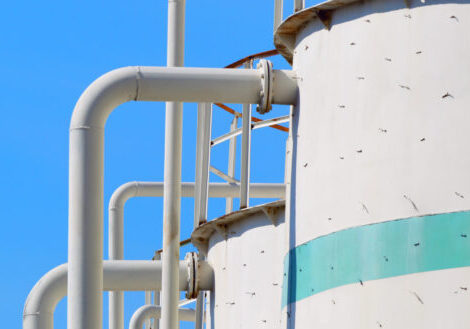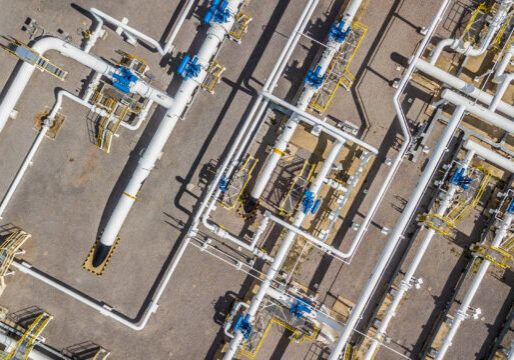May 5, 2025
Long-Duration Energy Storage: What Is It, Why Do We Need It, and When Will It Get Here?
By Seth Mullendore
There has been a lot of excitement in the energy world around the promise of long-duration energy storage (LDES) and emerging technologies challenging the dominance of lithium-ion batteries. National and international consortiums have sprung up to advance the sector, LDES businesses have surpassed billion-dollar investment milestones, and leading states have established the first LDES procurement targets. But what exactly is long-duration energy storage? Why are we talking about it now? And when will we actually need it? The answers to these questions can be fuzzy at best, but the trajectory of energy storage over the past decade can tell us a lot about where it might be heading in the next ten years.
What is long-duration energy storage?
The storage industry and policymakers have yet to settle on a single, agreed upon definition for LDES. In 2024, California, Massachusetts, and New York became the first states to officially set LDES procurement targets. According to California, which established the first major storage procurement target back in 2013, LDES is any technology that can store energy for 12 hours or longer. The state also set a 1-gigawatt multi-day storage procurement target. New York defines LDES as 8 hours or longer in the state’s updated energy storage roadmap and as 10 hours or longer in LDES funding announcements. Massachusetts defined three buckets of longer-duration energy storage – mid-duration for energy storage between 4 hours and 10 hours, long-duration for between 10 hours and 24 hours, and multi-day for anything over 24 hours. The US Department of Energy classifies LDES as inter-day (10 hours to 36 hours), multi-day/multi-week (36 hours to 160 hours), and seasonal shifting (over 160 hours).
Despite varying definitions, there’s general agreement that the long-duration storage designation begins right around the point where the economic viability of current lithium-ion batteries drops off, which experts tend to agree is in the 8- to 12-hour range. There is also broad agreement that technologies delivering 8 hours to 24 hours of energy meet different power system needs than technologies delivering energy over multiple days, weeks, or seasons. This gives us at least three main buckets of energy storage – short-duration (less than 8 hours), medium-duration (8 hours to 24 hours), and long-duration or multi-day (more than 24 hours).
The short duration bucket has been dominated by lithium-ion batteries, a trend that looks likely to continue for the foreseeable future. However, the field is still largely open for what technologies may ultimately succeed in the medium- and long-duration storage spaces.
While there are a number of contenders for LDES dominance, from well-known technologies like pumped hydro and thermal storage to more novel approaches like compressed gases and gravity storage, they all share the same two fundamental attributes. First, they are primarily composed of low-cost, abundant materials, like iron, air, sodium, and water. Second, it doesn’t cost much to scale up their storage capacity, so that adding additional duration is mostly a matter of bigger storage reservoirs, like larger tanks, basins, or underground caverns. If it can’t be made of low-cost materials and it can’t be inexpensively scaled to increase storage capacity, then it is not a good LDES candidate. This is particularly true once you get beyond the medium-duration range.
Why are we talking about long-duration energy storage now?
If we’re going to fully decarbonize the electric grid, we’re going to need longer-duration energy storage. As the grid increasingly incorporates solar and wind resources, which represent the lowest-cost sources of energy generation, longer durations of energy storage will be necessary to bridge the gaps when renewables output fluctuates due to weather conditions or other disruptions. In 2024, solar and wind accounted for 70% of new capacity added to the US grid, with batteries representing another 23% of capacity additions. Some areas with particularly high levels of renewable generation, like California and Texas, are beginning to hit the threshold where differences between energy supply and demand cannot be fully met by short-duration storage alone.
In addition to the obvious advantage of being carbon free, LDES has multiple other advantages over the gas power plants that have historically been used to balance the grid and are still being promoted by the fossil fuel industry as necessary for integrating renewables. First, LDES is primarily an upfront investment with minimal operating costs and, in most cases, no fuel price volatility, whereas gas is a global commodity subject to significant uncertainty, geopolitical risks, and price swings. Second, in addition to bridging gaps in energy generation, LDES can also store excess renewable generation during times of oversupply, something a gas plant cannot do. Third, LDES can provide multiple grid services, including frequency regulation, voltage support, and load shifting, while gas plants are slower to respond, less flexible, and less valuable in delivering grid services. Lastly, while gas plant costs have remained stable or in some instances have increased over time, LDES technology prices are rapidly falling due to innovation and scaling, with significant declines expected over the next few years.
The potential market opportunity for LDES, combined with the promise of continued technological advancement and cost declines, has resulted in big investments in LDES companies and emerging technologies. Investors are betting that at least one of these technologies is going to be the next big thing in the energy sector.
When will we actually need long-duration energy storage?
So far, lithium-ion batteries have done a good job of balancing solar and wind intermittency and delivering energy during periods of high demand. Batteries have proven themselves as key assets in maintaining grid reliability in both California and Texas, which are by far the leading states in battery storage installations with 13 gigawatts and 9 gigawatts respectively. With shorter-duration grid reliability concerns well on the path to being solved, forward looking states and policymakers are preparing the way for the next leap in the evolution of the grid.
Many experts already see a role for medium-duration energy storage (MDES) on the grid. Interconnection backlogs are slowing the deployment of new solar and wind at a time when load forecasts are anticipating significant growth due to new demand from data centers, manufacturing, and electrification. This is creating reliability gaps that are prolonging the life of inefficient and expensive fossil power plants and leading to a renewed push to build gas plants. MDES technologies, including pumped hydro, compressed air, and flow batteries, are well suited to fill these 8- to 12-hour reliability shortfalls and to transform solar installations into sources of firm, dispatchable power generation. The case for longer-duration storage, beyond 24 hours, is still further out. Most regions won’t see a critical need for multi-day storage within the next ten years, and it’s still up for debate as to whether the grid will ever really need multi-week or season storage.
So, if there’s already a need for MDES, why isn’t it here yet (and when will it get here)?
There are a couple of reasons why MDES is still more of a concept than a reality. First, and most importantly, there’s little to no economic incentive to build medium-duration energy storage. Capacity markets and incentive structures have been largely designed for lithium-ion batteries. If a 4-hour battery will get you a 100% credit in the capacity market, then why build a more expensive, longer-duration system? It’s only in the last year that states have begun establishing procurement mandates and incentive programs specifically designed for longer-duration installations, which is exactly how the short-duration storage market first began about ten years ago.
If history is any indicator of how the energy storage sector will advance, the average duration of new energy storage installations may exceed 8 hours within the next decade. In 2016, 257 megawatts of batteries were installed in the US, with an average duration of less than 1.5 hours. Year over year, both the total capacity and average duration of new installations have steadily trended upward, reaching 12,300 megawatts installed with an average duration of more than 3 hours in 2024. If these trends continue, new energy storage additions should reach an average duration of 8 hours sometime around 2035.
This trend toward longer storage durations is the result of several factors. One of the biggest factors has been declining costs driven by technological advances and increasing economies of scale. Battery prices have dropped more than 80% over the past decade and continue to decline despite inflationary pressures and geopolitical uncertainties. These declines have allowed batteries to become economically viable for incrementally longer-duration use cases. The first real boom in storage installations was in response to new market opportunities for high-value, fast-response frequency regulation services, a need that could be met by batteries with a duration of 1 hour or less. Today, batteries are largely being installed for renewable energy integration, grid capacity, and peak demand reduction, longer-duration use cases requiring 2- to 4-hour battery systems. Many regional grid operators have established 4 hours as the minimum storage duration required to receive full capacity credit, and utilities have become more comfortable deploying batteries to defer transmission and distribution system upgrades and to replace aging peaker power plants.
But cost declines alone won’t be enough to incentivize large-scale deployment of longer-duration energy storage. MDES and LDES systems are very capital-intensive to build and can’t economically compete with lithium-ion for the shorter-duration market opportunities that exist today. State procurement mandates, like California’s target of up to 2,000 megawatts of MDES and LDES by 2037, are a good initial step. Capacity markets and grid services products will also need to be reevaluated to recognize and adequately compensate the value of longer-duration storage for services such as increased system reliability, congestion relief, capacity shifting, and avoided renewables curtailment. Utilities must be required to accurately model and evaluate longer-duration energy storage in long-term planning process and to implement technology-neutral procurement approaches that solicit resources based on system needs rather than specific technologies. States and the federal government must also continue to invest in LDES research and development, demonstration, and commercialization. Most of these technologies are still in the early phases of demonstration and will need continued support to achieve commercialization.
Long-duration energy storage is one of the final keys needed to unlock full decarbonization of the energy system. While wide scale deployment of longer-duration storage may seem far in the future, lithium-ion batteries went from a few demonstration projects to gigawatts of annual capacity additional in less than a decade. With the right policies and market structures in place and continued investment in technological and manufacturing advancements, long-duration storage technologies can achieve the same level of rapid scale-up and grid integration.
To help ensure that the pace of this scale-up meets the urgency of the climate crisis while prioritizing energy equity, Clean Energy Group is focusing on increasing the transparency of long-duration storage technologies and advancing inclusive policies that maximize benefits for communities impacted by the fossil fuel industry and minimize harm to all communities. In the coming months, we will be releasing more resources to raise awareness of the value that long-duration storage can deliver and overcome the challenges the sector is facing. Clean Energy Group will be hosting a panel discussion on long-duration energy storage with experts representing state, utility, and academic perspectives on June 2.





